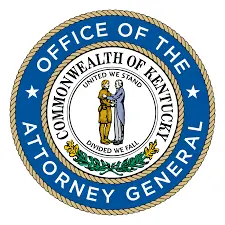 AAA: Downward Trend Continues at the Pump in Kentucky
AAA: Downward Trend Continues at the Pump in Kentucky
After dropping by 20 cents last week, gas prices in West Central Kentucky are another 20 cents lower this week at $1.578, according to AAA East Central’s Gas Price Report. As pump prices continue to plummet across the country, prices in West Central Kentucky are ending March a whopping 67 cents cheaper than at the beginning of the month.
Six Great Lakes and Central States land on the top 10 list of cheapest averages in the country all with averages at $1.75 or less: Wisconsin ($1.59), Ohio ($1.65), Kentucky ($1.69), Michigan ($1.71), Indiana ($1.72) and Missouri ($1.75). Year-over-year, some states are seeing more than a $1/gallon savings: Wisconsin (-$1.10), Michigan (-$1.08) and Indiana (-$1.00).
On the week, state averages declined between 11 to 22 cents despite a drop in gasoline stocks. The region’s stock level declined by 800,000 barrels down to 56.2 million barrels, according to the latest data from the Energy Information Administration (EIA). However, with an increase in regional refinery utilization, up 2.5% to 88%, stocks could see an increase in the next EIA report, which could push gas prices even cheaper throughout the region.
This week’s average prices: Western Central KY Average $1.578
Average price during the week of March 23, 2020 $1.771
Average price during the week of April 1, 2019 $2.586
Average prices of unleaded self-serve gasoline in various areas:
$1.671 Bowling Green
$1.384 Elizabethtown
$1.817 Louisville
$1.353 Owensboro
$1.667 Paducah
On the National Front
At $2.01, the national gas price average is 11-cents cheaper on the week, 43-cents less expensive on the month and 68-cents less than a year ago. This week, AAA expects that the national gas average will drop below $2/gallon for the first time in four years, with the potential of falling even further in the weeks ahead.
Crude oil continues to price low as U.S. gasoline demand decreases to numbers typically seen during the winter driving season. In fact, there is an atypical amount of winter-blend gasoline supply still available, which has caused the Environmental Protection Agency to extend the sale of winter blend past the May 1 deadline to May 20. The agency said they will continue to monitor and, if necessary, extend the waiver again.
One of the key differences between summer- and winter-blend gasolines is how easily the fuel evaporates at a given temperature. The more volatile a gasoline, the easier it evaporates. Summer-blend gasoline has a lower volatility to prevent excessive evaporation when outside temperatures rise. It also has a higher cost of production, which is one of the reasons gas prices typically increase in the spring and summer months. Delaying the switch-over to summer-blend gasoline should prove to be another contributing factor to sustained lower gas prices.
While this delay and lower demand are major players in the precipitous drop in gas prices, the cost of crude oil continues to steal the show (crude accounts for more than 50 cents of every dollar spent at the pump). West Texas Intermediate continues to hover in the $20/barrel range, at times dipping into the teens. Prices continue to decline as the public health, financial, and economic impacts from COVID-19 continue to mount. Until these impacts subside and Russia and Saudi Arabia end their crude price war, the cost of a barrel of oil is likely to remain at lows not seen in nearly two decades.
Motorists can find current gas prices nationwide, statewide, and countywide at GasPrices.AAA.com.
AAA East Central is a not-for-profit association with 78 local offices in Kentucky, New York, Ohio, Pennsylvania and West Virginia serving 2.7 million members. News releases are available at news.eastcentral.aaa.com. Follow us on Twitter and Facebook.







